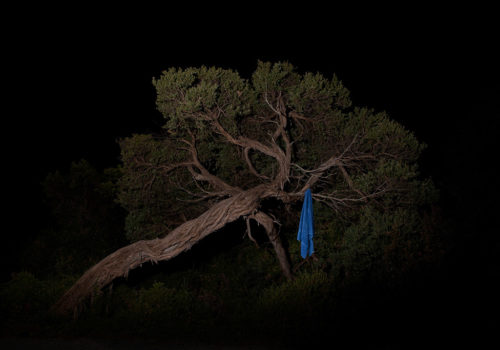In her latest exhibition, “In Tenebris”, which is Latin for ‘in darkness’, photographic artist Rebecca Dagnall explores the concept of the Australian gothic drawing on colonial literature which she says is where the notion of the gothic was first seen in Australian culture.
Within this framework Dagnall has created a series of 13 photographs that invite the viewer into a dark landscape that is at once recognizable and unfamiliar. While the European gothic speaks of antiquities, amazing architecture and haunted houses, Dagnall says the Australian gothic “seems to have taken hold around things like isolation in the bush, which comes from that colonial influx where the harshness of the landscape, the difficulty of living somewhere so foreign, so unknown, where animals can kill you, was quite scary”.
She continues. “As a young country we’ve built up these layers of history that are embedded in the landscape and there is this perception that we all live in the outback and are surrounded by the bush”. This idea is of course in complete contrast with reality; the majority of Australians live along the coastline in urban centres, yet the myths around the outback continue to haunt our history, says Dagnall.
“The Australian landscape is still an unfamiliar space and it can be quite scary when you think of things like the backpacker murders, or that a dingo can take your baby. It is also the vastness of the interior, of the open spaces and the isolating, foreign empty nothingness that people find confronting.” (The ‘backpacker murders’ is a label given to the serial killer who preyed on travelers in New South Wales in the 1990s, and the reference to the dingo is in relation to the Chamberlin case in 1980 where a baby was taken from a campsite by a wild dog known as a dingo).
Scary and dangerous, that’s one of the overarching perceptions of the Australian outback. While that view is perhaps extreme, the Australian bush does exude a kind of eeriness and Dagnall’s photographs capture that feeling of uncertainty that comes from being in the bush, especially for us city slickers. For example the image titled ‘swag’ holds a particular horror for me. I tell Dagnall that I could never conceive of sleeping in a swag on my own in the middle of nowhere, my imagination would run away with me. She laughs and confesses to a great love of heading to the bush on her own.
Our differing reactions exemplify the intentional ambiguity of her images, which allow viewers to create their own narrative. It is this invitation to dwell in one’s imagination that makes In Tenebris so captivating.
EXHIBITION
In Tenebris
Until 29 March 2014
Edmund Pearce Gallery
Level 2 Nicholas Building
37 Swanston Street
Melbourne
















